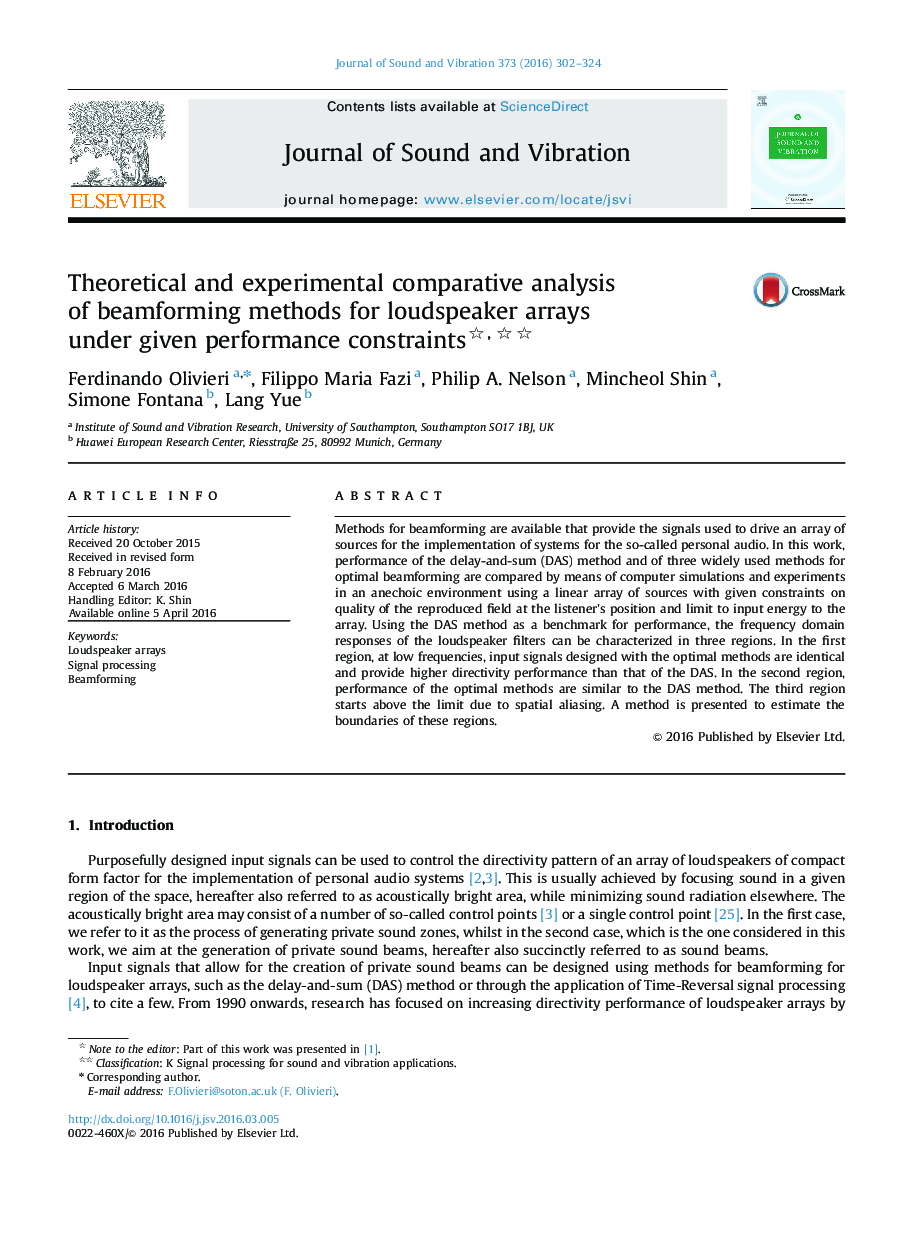| Article ID | Journal | Published Year | Pages | File Type |
|---|---|---|---|---|
| 287011 | Journal of Sound and Vibration | 2016 | 23 Pages |
•Comparison of four beamforming methods under performance constraints.•Performance of optimal methods are identical at low frequencies.•Performance of optimal methods are identical to that of the Delay And Sum in the mid5 frequency range.
Methods for beamforming are available that provide the signals used to drive an array of sources for the implementation of systems for the so-called personal audio. In this work, performance of the delay-and-sum (DAS) method and of three widely used methods for optimal beamforming are compared by means of computer simulations and experiments in an anechoic environment using a linear array of sources with given constraints on quality of the reproduced field at the listener׳s position and limit to input energy to the array. Using the DAS method as a benchmark for performance, the frequency domain responses of the loudspeaker filters can be characterized in three regions. In the first region, at low frequencies, input signals designed with the optimal methods are identical and provide higher directivity performance than that of the DAS. In the second region, performance of the optimal methods are similar to the DAS method. The third region starts above the limit due to spatial aliasing. A method is presented to estimate the boundaries of these regions.
